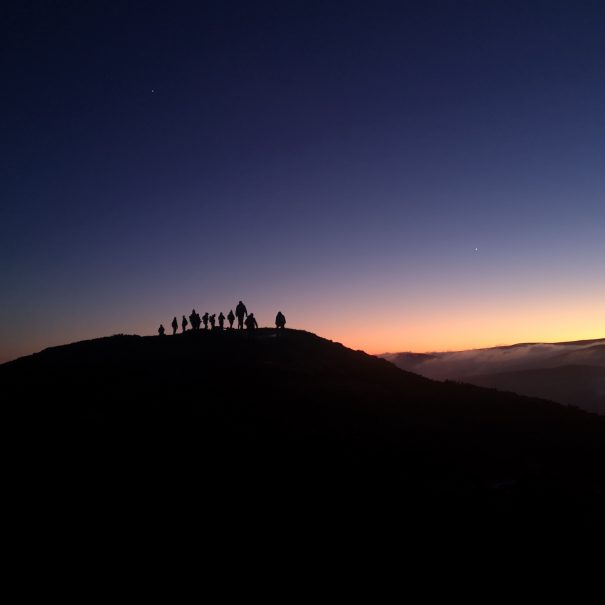I. Introduction

A. The Allure of Night Hiking
There is something undeniably magical about venturing into the wilderness under the cover of darkness. Night hiking offers a unique and immersive experience, allowing hikers to connect with the natural world in a way that is entirely different from daytime excursions. The allure of night hiking lies in the tranquility of the nocturnal environment, the mystery of the darkened trails, and the opportunity to witness the captivating sights and sounds of the wilderness after twilight.
B. Overcoming Challenges and Safety Concerns
While night hiking presents a host of alluring experiences, it also comes with its own set of challenges and safety concerns. Navigating unfamiliar terrain under reduced visibility, contending with potential wildlife encounters, and ensuring personal safety in the darkness are all factors that night hikers must address. Additionally, adjusting to the sensory and psychological differences of hiking in low-light conditions poses unique challenges that hikers need to manage effectively.
C. Setting the Stage for an Exciting Nocturnal Adventure
To embark on a safe and successful night hike, thorough preparation and a mindful approach are essential. Setting the stage for an exciting nocturnal adventure involves researching the chosen trail, checking weather conditions, and carefully planning the route. Equipping oneself with adequate gear, knowledge, and a proactive mindset is key to embracing the mysteries and excitement that night hiking has to offer.
II. Essential Gear and Preparation
A. Illumination: Choosing the Right Headlamps and Flashlights
Illumination is of paramount importance when venturing into the darkness of the night. Selecting the right headlamps and flashlights is crucial for maintaining visibility, navigating the trail, and ensuring personal safety. Factors such as brightness, battery life, and light beam distance should be carefully considered when choosing illumination devices for night hiking.
Navigational tools are indispensable for safely traversing trails after dark. Carrying detailed maps, utilizing GPS technology, and familiarizing oneself with trail markings are essential for maintaining orientation and preventing disorientation in the darkened environment. Effective navigation skills and tools are imperative for a successful night hike.
C. Safety Essentials: First-aid Kit, Emergency Contacts, and Situational Awareness
Prioritizing safety through preparedness is fundamental before embarking on a night hike. Carrying a well-equipped first-aid kit, having emergency contacts on hand, and maintaining keen situational awareness are critical components of ensuring personal safety and readiness for any emergency scenarios that may arise during the nocturnal adventure.
III. Night Hiking Techniques and Tips

A. Adjusting to Low-Light Conditions and Sensory Perception
Night hiking requires acclimating to low-light conditions and honing sensory perception to navigate the trail effectively. Adjusting to the reduced visibility involves allowing the eyes to adapt to the darkness, using peripheral vision to detect movement, and understanding the limitations of depth perception in dimly lit environments. Additionally, relying on other senses such as hearing and touch can enhance awareness and aid in maneuvering through the night.
Traversing the terrain during night hikes introduces unique challenges such as uneven surfaces, obscured trail markers, and potential wildlife encounters. Techniques for safely navigating the terrain include maintaining a steady pace, using trekking poles for stability, and staying vigilant for signs of nocturnal wildlife. Understanding animal behavior and appropriate responses can help mitigate potential encounters and foster coexistence with the creatures of the night.
C. Preparing for Unexpected Weather Changes and Natural Obstacles
The nocturnal environment can present unpredictable weather changes and natural obstacles that require careful preparation. Being equipped with appropriate clothing layers, rain gear, and understanding weather patterns can mitigate the impact of unexpected changes. Additionally, being mindful of potential obstacles such as fallen branches, loose rocks, and river crossings is essential for navigating the trail safely in the dark.
IV. Maximizing Night Hiking Experience
A. Embracing the Nocturnal Ambiance and Wildlife Encounters
Immersing oneself in the tranquility and mystique of the night creates an opportunity to embrace the unique ambiance and wildlife encounters that unfold after dusk. Observing the nocturnal activities of wildlife, listening to the symphony of nighttime sounds, and experiencing the serenity of the wilderness under the moonlit sky can enrich the night hiking experience.
B. Staying Connected to Nature and Mindfulness in the Moonlight
Night hiking provides an opportunity for heightened mindfulness and connection to the natural world. Venerating the beauty of the night, practicing mindfulness in movement, and cultivating a deeper appreciation for the subtleties of nature under the moonlight can elevate the spiritual and emotional experience of the hike.
C. Capturing the Nightscapes: Photography and Stargazing During the Hike
The night offers a canvas of celestial wonders and ambient beauty that is ideal for capturing through photography and stargazing. Creating breathtaking images of the night landscapes, celestial bodies, and the interplay of light and shadow in the nocturnal wilderness can be a rewarding aspect of the night hiking experience.
V. Safety Protocols and Emergency Preparedness

A. Communication Strategies and Setting Check-in Times
Maintaining clear communication and setting designated check-in times is crucial for ensuring safety during night hikes. Establishing communication protocols, sharing itinerary details, and designating emergency contact persons can facilitate prompt response and support in the event of unforeseen circumstances.
B. Reacting to Injuries and Managing Unexpected Situations
Being prepared to react to injuries and unexpected situations during night hikes is essential for ensuring the well-being of all participants. Carrying a well-equipped first-aid kit, acquiring knowledge of basic first-aid techniques, and understanding evacuation options in remote areas can contribute to effective injury management and crisis intervention.
C. Evacuation Procedures and Emergency Response Protocols
In the event of a critical situation or emergency, understanding evacuation procedures and emergency response protocols is paramount. Having a sound understanding of exit routes, emergency signaling methods, and coordinating with local authorities or search and rescue teams can facilitate a timely and coordinated response to emergencies during night hikes.
VI. Preserving the Environment and Respecting Wildlife
A. Minimizing Impact and Leaving No Trace Principles
The practice of night hiking necessitates a commitment to minimizing environmental impact by adhering to Leave No Trace principles. This entails a mindset of respect for the natural surroundings, including responsible waste disposal, avoiding damaging vegetation, and minimizing noise pollution. Understanding and applying principles of Leave No Trace fosters a harmonious coexistence with the natural environment.
B. Coexisting with Nocturnal Wildlife and Responsible Behavior
Night hiking provides an opportunity to share the landscape with nocturnal wildlife, presenting an imperative for responsible and ethical behavior. Respecting wildlife by observing from a distance, refraining from engaging in activities that could disrupt their natural behaviors, and understanding the principles of ethical wildlife viewing are essential to coexisting respectfully with the fauna of the night.
C. Promoting Awareness and Conservation Efforts through Night Hiking
Engaging in night hiking offers a platform to raise awareness and contribute to conservation efforts. Sharing knowledge about nocturnal ecosystems, participating in wildlife monitoring programs, and supporting initiatives for habitat preservation and restoration can be integral components of using night hiking as a tool for environmental education and conservation advocacy.
Conclusion
By embracing the techniques and tips for adjusting to low-light condition, individuals can embark on nocturnal adventures with confidence. Night hiking offers a transformative and magical journey through the natural world. With a commitment to mindfulness, safety, and environmental stewardship, night hiking can be a truly enchanting and fulfilling outdoor pursuit.
